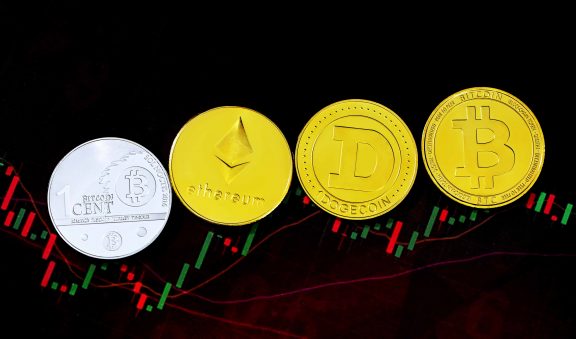While ‘bull’ and ‘bear’ are two of the many jargons you will often come across in the crypto market, they are jargons generally associated with traditional stock trading. Since the crypto market shares quite a number of similarities with the stock market, this should not be a surprise. Both ‘bull’ and ‘bear’ essentially describe the attitude or approach a trader or investor has towards the market. But how did animal symbols come to represent the decisive seasons of the stock and crypto markets?

In a bear market, there is a pessimistic movement in the market. This indicates that share prices are falling. The market is down. On the other hand, a bull market describes an optimistic movement in the market. This indicates share prices are rising. The market is up. Both bear and bull markets react to the economics of demand and supply.
Bear and bull in stock trading and crypto trading
“Don’t sell the skin till you have caught the bear” is a proverb traced to an English fable. Eventually, from the 18th century, the idea of a bear was applied to stock trading. When a stock trader sells a stock based on speculation that the price of the stock may decline in the future, that trader as well as the stock market in decline is called a bear. Similarly, in the crypto market today, when a crypto asset is sold based on the speculation that the price of the crypto asset will decline in the future, the crypto trader or investor as well as the crypto market in decline is called a bear.
About the same period, the bull symbol was introduced in the stock market. While the original meaning is a speculative purchase in the expectation that stock prices would rise, ‘bull’ also eventually meant the trader or investor purchasing such stocks based on speculated rise.
How to identify a bear market
In the context of a crypto bear market, the market is down or “red”. During a bear market, there is:
- low investor confidence, negative outlook, and general pessimism in the market;
- less disposable income to buy more assets;
- declining profits;
- existence of several new trading lows and troughs;
- increasing rate of short orders or short selling;
- Increasing conversion from bitcoin and other volatile cryptocurrencies or crypto assets to stablecoins such as USDT, USDC, BUSD, etc;
- decreasing trading activity; and
- Decreased demand for call options in the futures market.
Understanding the four (4) phases of a bear market
Typically, a bear market experiences 4 phases in its pessimistic lifecycle:
- First phase: Investor sentiment and prices of securities are very high, but the investors are extracting maximum profits and exiting the market.
- In the second phase, prices of stock fall rapidly, trading activity and earning of corporates fall, and the positive economic indicators are not performing as expected. The confidence of investors heads towards pessimism and can create a situation of panic. Market indices and a large number of securities reach new trading lows, and dividend yields also become very high. It is an indication of more money required to be pumped into the system.
- The third phase: highlights the entry of speculators in the market with prices and trading volumes continuing to rise.
- The last phase indicates the further downfall of stock prices but at a slower pace. It is considered as a point of the lowest ebb, and investors start believing the worst may be over and positive reaction starts flowing in with bear markets.
How to identify a bull market
In the context of a crypto bull market, the market is upbeat and “green”. During this a bull period, there is:
- high investor confidence, positive outlook, and general optimism in the market;
- more disposable income to buy more assets;
- increasing profits;
- new trading highs (all time highs);
- increasing rate of long orders or long selling;
- increasing conversion from stablecoins such as USDT, USDC, BUSD to bitcoin and other volatile cryptocurrencies or crypto assets;
- increasing trading activity; and
- Increased demand for call options in the futures market.
Understanding the four (4) phases of a bull market
Typically, a bull market experiences 4 phases in its optimistic lifecycle:
- First phase: Prices of assets are low and investor sentiment is weak, having just witnessed a pessimistic bear season;
- Second phase: Prices of assets start getting revived with chats going green; trading activities start picking up; and profit margins start increasing gradually; and assets are performing at above-average levels;
- Third phase: Assets gain significant value, with many touching new highs; trading activities continue to rise; dividend yields begin to reduce; and market liquidity increases;
- Final phase: Trading activities are high; speculation is high; the market is willing to pay for assets based on technical analysis (i.e. P/E ratios are at an all-time high).
Rounding off
As obvious as it may seem or sound, understanding the bear and bull markets is critical when navigating the ever-dynamic, ever-swinging, and and quick-footed crypto market. Amidst the high volatility that largely characterizes crypto assets, being able to identify markets and their lifecycles help a great deal. Whether you are feeling bearish or bullish will not be of much good to your crypto-asset portfolio if you don’t pay deserving attention to what the market wants.




3 Comments
Mrs Ejike
Thank you so much. This was very helpful.
Christopher Okon Etim
Nice one Boss